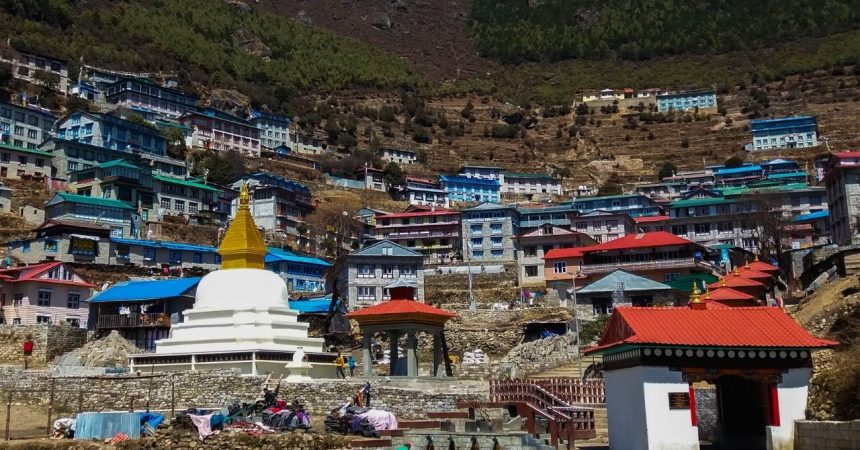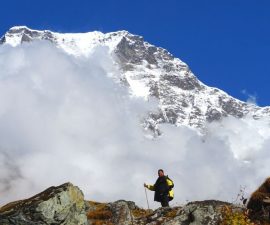Are you planning to trek to Everest Base Camp? Are you wondering how difficult is it to trek to Everest Base Camp? You need not worry because we got you covered.
In this blog, we will let you know the difficulty level of trekking- to the base camp of the world’s highest mountain.
Everest Base Camp Trek is one of the most popular treks in Nepal, if not the most popular trek in Nepal. Every year, especially in April – May (Spring) or October – November (Autumn), thousands of trekkers head to the base camp of Everest. It is the best time to embark on an adventure to Everest Base Camp.
However, some trekkers explore the trail to Everest Base Camp even in winter in a quest to complete their dream adventure. The only advantage of trekking in winter is the less-crowded trail. But it is not recommended to trek during off-seasons.
Talking about the trek’s difficulty, it is classified as a Moderate level trek. You must know that it is 2 weeks of adventure. The minimum days required to reach Everest Base Camp is 14 days. Some travel companies offer 14 days trek to EBC. And some beyond 14 days.
However, you can customize your trip. You can always ask the travel agency to customize your trip or stick to the offered itinerary. But if you are an independent trekker, make sure you seek help from trusted websites or bloggers.
The average walking time is 4-6 hours, and the maximum is 7-8 hours. The trail pass through beautiful villages, rhododendron forests, diverse landscapes and is easily navigable. Rest assured that the trek is non-technical. If you are in good health, you can conquer the trek with some preparation and determination.
That said, you must consider the following things for your adventure to Everest Base Camp.
Table of Contents
Training
Training for Everest Base Camp Trek is absolutely imperative. However, you need not sign up for a gym or hire a personal trainer. You can do it on your own. You can start with a short hike around your house, or some basic workout will work.
Start training on your own for a month prior to your trek—practice carrying a light backpack and walk for a couple of hours every day. Go for some aerobic exercise. The basic idea is that your body should be ready for your adventure.
Altitude
The highest altitude for your Everest Base Camp trek is 5,64m at Kala Patthar. The height of the Everest Base Camp is 5,364m. The elevation is the major concern of this trek.
Perhaps this trek takes you to a higher altitude, and your body might not adjust to such height, causing altitude sickness. Altitude sickness is a serious risk for many trekkers. Hence acclimatization days are essential.
Altitude Sickness
When you travel to a higher altitude, you can get altitude sickness. Headache, dizziness, shortness of breath, ringing in the ears, loss of appetite, vomiting, numbness, etc. are some of the major symptoms of altitude sickness.
To avoid altitude sickness, make sure you walk at your own pace and stay hydrated. And do not ascend too quickly. Avoid smoking and alcohol, and do not climb more than 300m to 500m a day.
It is okay to use Diamox, but we recommend not to use it. Provided the fact that it has side effects, sometimes using Diamox is the best option. It helps you to recover from Acute Mountain Sickness (AMS). Remember that you cannot take medicine after having the symptoms of altitude sickness.
The climate in the Everest Region
As we mentioned earlier, if you want to get the most out of your trek, make sure you trek in autumn or spring. Trekking in monsoon or winter is not recommended. You will regret it for sure.
Cost of the Trek Explained in this blog
Recommended Blog- Reasons to Trek to Everest Base Camp



